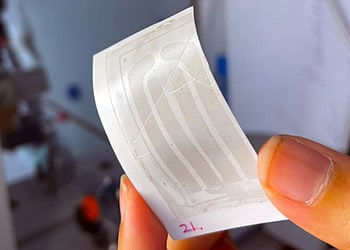We’ve all been hearing about the miracles that carbon nanostructures will provide us in the near future for several years now. One of the first steps to making its application commercially viable is making it easy to use and manufacture. Researchers from the Harbin Institute of Technology at Weihai and Southeast University have made identifying the thickness of graphene easy with the use of just a normal microscope and the Matlab computer program.
The thickness of graphene is one of the major factors in determining the structure’s purpose, and varying thickness leads to a number of useful applications. However, since its discovery in 2004 there has not been a reliable, cheap method of measuring it. Processes such as raman spectroscopy and atomic force microscopy (don’t worry, I don’t know either), cited as being expensive and having low output, are two examples of previous methods that have been used.
Thankfully, researchers have found that using a simple optical microscope, such as you would find in a standard science classroom, and Matlab, a widely used program, finding graphene thickness is a simple process. The theory is that by comparing the red, green and blue light contrast between the sample (graphene in this case) and a background material, the thickness of the sample can be determined. The greater the contrast, the thicker the sample material. In practice, the microscope takes a picture of the sample and the material that it is being measured against. Then Matlab is used to examine and measure the red, green and blue values for every pixel of the image.
It seems like such a simple process, and it is; that’s what makes it such a useful discovery. Simple usually means cheap, and cheap means it can be widely distributed, increasing the likelihood of carbon-based nanostructures becoming an important part of life in the very near future.
The findings were reported in the journal Nanotechnology.






